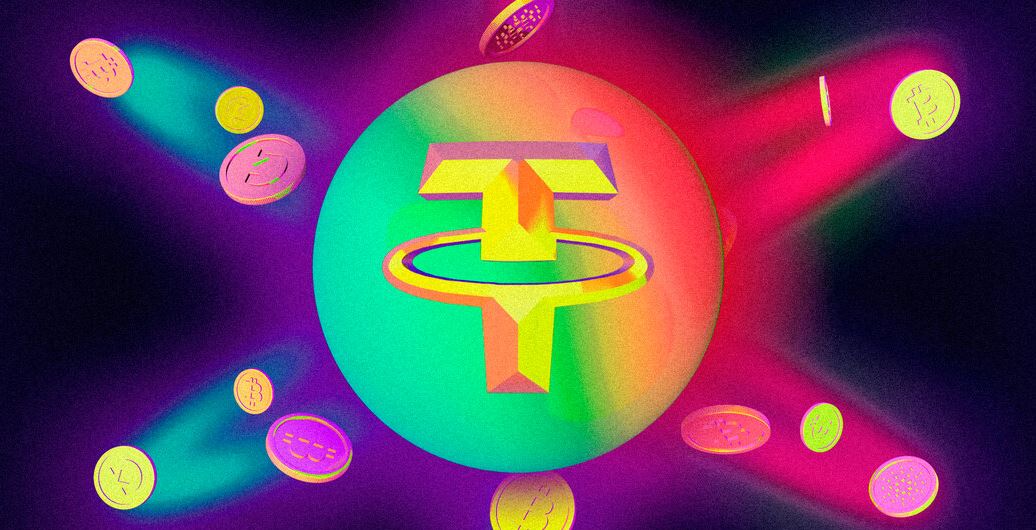Cryptocurrency prices are plunging. In a couple of days, the so-called stablecoin has lost all of its value. A cutting-edge cryptocurrency bank has temporarily banned withdrawals. And investors have been driven to the brink of bankruptcy as a result. Now the crypto sector is faced with an even grimmer prospect: The worst may be yet to come.
Tether, a corporation whose eponymous currency is a pillar of crypto trading globally, is becoming an increasing source of concern as another possible weakness in the cryptocurrency system. Long one of the most watched firms in the sector, Tether is under heightened pressure from regulators, investors, economists and increasing legions of critics, who fear it might be another domino to fall in an even greater disaster.
Stablecoins are a sort of cryptocurrency that are linked to a stable asset such as the US dollar. Tether is the most prominent issuer of stablecoins. Unlike regular cryptocurrencies such as Bitcoin and Ether, whose monetary value may vary wildly, stablecoins are primarily meant to maintain a constant price of $1 and are backed by substantial reserves of cash or other financial engineering. Because of this regularity, cryptocurrency traders are able to execute transactions that are secure and predictable without having to depend on banks or other financial gatekeepers.
But many of these coins are steady in name only. The collapse of TerraUSD, a stablecoin with a $1 peg that was algorithmically linked to a sister cryptocurrency named Luna, was a contributing factor in the meltdown of cryptocurrencies that occurred a month ago. The fall was partially sparked by the failure of TerraUSD. When the price of Luna collapsed, TerraUSD also plunged, creating a “death spiral” that rattled the entire market.
In a worst-case scenario, sceptics argue, a downturn might ignite the crypto equivalent of a bank run. Traders may all rush to trade their Tethers for dollars, only to learn that Tether could not execute those orders. Investors would lose billions of dollars, driving them to liquidate their other crypto assets, producing a potentially severe panic that would spread into non-crypto markets.
Tether got a taste of that situation last month. A flood of investors asked to exchange their Tethers for dollars as cryptocurrency prices fell, which forced the company to pay out about an eighth of its reserves, or $10 billion, over the course of a week and a half. This forced the company to pay out about an eighth of its reserves as cryptocurrency prices fell. On cryptocurrency exchanges, Tether momentarily strayed from its $1 peg. The disaster was “the finest narrative that could have happened to Tether,” Paolo Ardoino, the company’s chief technical officer, said in an interview. “We don’t mess around, and we take risk management very, very seriously,” said the company.
Then, on Sunday, the cryptocurrency bank Celsius Network made the announcement that it would be stopping withdrawals, which caused the values of digital currencies to drop once further. According to Bloomberg News, Tether had invested in Celsius in 2020 and loaned it around one billion dollars’ worth of Tethers; however, the business said earlier this week that it now had “zero exposure” to Celsius other than a minor investment in the startup. Despite this, investors withdrew around $1.6 billion from Tether when the market was in a tailspin. Tether has had phenomenal expansion. Over the course of the last year, it has released over 50 billion stablecoins, which has more than tripled the total supply. During the course of the conversation, Mr. Ardoino was quoted as saying, “If we have to repay to the last penny, we can do it.”
The firm is run by around fifty people across three continents: Europe, Asia, and Latin America. The company’s chief executive is a Dutch businessman named JL van der Velde, and his LinkedIn page gives the impression that he is headquartered in Hong Kong. However, the company has refused to confirm this information. Both he and Mr. Devasini, who is the chief operational officer, only sometimes have conversations in public. Mr. Ardoino is the one who represents Tether to the public. He says that his coworkers are “regular people” who are astonished by the progress of the firm.
Only one fourth of the time over a 26-month “sample period” between 2016 and 2018, the Commodity Futures Trading Commission discovered that Tether has adequate reserves in its accounts. This discovery was made in October of last year. The commission was awarded the sum of $41 million in fines from the corporation. Since the settlement in New York, Tether has been issuing quarterly disclosures in which it discloses the components that make up its reserves. But the company’s statements haven’t done much to dispel the widespread suspicion.
Tether disclosed about a month ago that around $20 billion worth of its reserves were made up of commercial paper, which is a decrease of $4 billion from the amount reported in February. Additionally, it boosted its exposure to money market funds, which may invest in commercial paper, from $3 billion to around $7 billion during this time period. Tether disclosed further information, including the fact that $5 billion of its reserves were held in “other investments,” which included digital currencies. The study, it was stated by detractors, was virtually meaningless since the project does not yet possess the type of stability that the majority of investors anticipate.
She said that the proliferation of stablecoins brings up “the same type of problems that we have recognised for ages in relation with bank runs.” Mr. Ardoino said that Tether was keen to collaborate with authorities in the development of a worldwide framework that governs the disclosures that stablecoin issuers are required to make regarding their reserves. Tether, on the other hand, has opposed more stringent measures that would subject it to regulatory obligations comparable to those that are imposed on regular banks.

